Kester Grant’s bestselling novel The Court of Miracles, is a fantasy re-imagining of Les Miserables. As part of our Bastille Day partnership, Grant examines the origins of the powerful connection between the people of France and their bread!

Composed in one fevered night during the French Revolution, La Marseillaise – a strong contender for the most bloodthirsty national anthem of all time – has a verse that says:
Do you hear in the countryside? The roar of fierce soldiers, coming right into your arms, to slit the throats of your sons, your companions.
French, a romance language, was born from Latin. Thus the word compagnon, comes from the idea that ones companion is the person with whom, together (com), we share bread (pain).

Indeed, French idea of bread is so intrinsic to their national identity that they have a French Bread Observatory – l’Observatoire du Pain – and President Emmanuel Macron declared the French baguette should be listed as a Unesco cultural treasure.
And we all know the story; the French populace were starving, misérables, and extremely downtrodden. When informed that the peasants had no bread to eat, Queen Marie-Antoinette is alleged to have replied:
“Then let them eat cake!” – demonstrating a shocking lack of understanding of rudimentary bread shortage economics, and a death-wish that would soon lead her to lose her head to Madame Guillotine. Or that’s how the story goes. The truth is rather more interesting.
Firstly, her quote is mistranslated, “Qu’ils mangent de la brioche…” means ‘Let them eat brioche,’ which, although a tiny bit sweet, is not nearly the same thing as cake, but rather more closely related to the bread that the starving populace was crying out for.
Secondly the Queen literally never said those words. The phrase is first mentioned in Jean Jacques Rousseau’s Confessions, about a French Princess at a time when Marie-Antoinette was still a child in Austria. Still, no matter how historically inaccurate, Marie-Antoinette had become a symbol of the extravagance of the nobility. They might not have been her actual words, yet her mythology is entwined with this phrase because she stands in French popular imagination as the queen who didn’t care about the starving people.
French identity has always been deeply rooted in the actions of their Revolution. They overthrew their royal house and the excesses of their noble class, abolished feudalism, proclaimed themselves a republic and created The Declaration of the Rights of Man. They also passed a law stating:
“Richness and poverty must both disappear from the government of equality.
It will no longer make a bread of wheat for the rich and a bread of bran for the
poor. All bakers will be held, under the penalty of imprisonment, to make only
one type of bread: The Bread of Equality.”

Thus, in France, bread is so much more than just bread. It is symbolic of the basic needs of the people. An act of radical republican democratisation, a motif of equality, hard-won rights granted only after the city had bathed in the blood of its oppressors.
The Baguette itself is also a matter of much folklore and propaganda. Was it created by Napoleon Bonaparte, who passed a law decreeing bread be baked in long slender loaves of measurements to fit exactly in a special pocket of the army’s uniforms? Was it the Parisian Metropolitain who begged bakers for bread that was thin enough to be torn by hand, so that workers could stop travelling with knives, thereby reducing commuter violence?
Or, was it the passing of the 1920’s law prohibiting bakers from working between 10pm and 4am, thus giving them too short a window in which to bake a proper loaf, and forcing them to invent a wand like baton shaped bread that could be ready in the allotted time frame.
Or, more controversially for any patriotic Frenchman, could it have come into Paris with Austrian officer August Zang, who brought the city’s first steam oven and is credited for introducing the country to Viennoisserie, and – get ready for it – the croissant – gasp. Yes, the beloved Croissant is not French at all, it’s a foreign confection enjoyed in the coffee houses of Vienna, and smuggled in by the dastardly Austrians!

But, let us choose to ignore that last heinous suggestion. And focus on celebrating this glorious Bastille day with a good crusty hunk of warm French Baguette. It must be an authentic baguette, don’t imagine that any thin shaped bread substitute will do. A true baguette is made of only four ingredients: flour, salt, water and yeast. Traditionally it should be around 24 to 30 inches in length. And it must have been baked on the premises where it’s sold.
Once you’ve interrogated your Boulanger as to provenance, ingredients, and measurements, remember that consumption of your crusty loaf can be just as fraught. Don’t forget to mind your baguettiquette and consume it according to proper Parisian rules:
• Baguette is broken, never cut at the table, or as the expression goes; “On ne coupe pas le pain, on le rompt.”
• Baguette is dipped in tea or coffee, don’t let the soggy crumbs upset you, this is a French National holiday, it must be authentic.
• You may use your Baguette to mop up your leftovers.
• Baguette is served on the table and NEVER on a plate.

So, lets celebrate… Liberté! Egalité! Fraternité!
And not to worry, should you commit any minor baguette-infractions, the French Bread Observatory will probably only track you down and publicly humiliate you.
Santé, mes amis


